Some time ago, I needed to make a cut with the jigsaw in inverted position, so I simply mounted it in a table. It worked, but the edges of the workpiece weren’t square due to flexion of the blade.
I knew I should make a new, suitable jigsaw table. While planning this project, I gathered ideas in a Pinterest board, in order to have related links at hand (https://es.pinterest.com/morsa00/pro...jig-saw-table/). As you can see, there are many projects, ranging from small and simple, to very sophisticated ones.
The goals of this project were:
1- Whenever possible, to use material already present at the shop
2- Keep it simple, but capable of making perfectly vertical cuts
3- Since I count with table saw, radial saw, miter saw, band saw and scroll saw, in no way this jig would be the first choice for any cut, but rather only for specific tasks.
So, this is the project I’ve just finished last week:
I used the table of the http://www.homemadetools.net/forum/w...1998#post75553 (this way, I did not have to make another space-occupying jig).
The blade stabilizer was made by reusing two bearings, and the arm, with leftover aluminum profiles and with scrap wood.
A miter gauge (bought in a flea market, 20 years ago) runs in a dado for cross cutting, and a fence guides rip cuts.
The groove, originally made for the circle-sanding jig, was “shifted” in order to align the centerline (pivot point) with the front of the blade, so it could be used for cutting circles. Again, I used the http://www.homemadetools.net/forum/h...1857#post75289 as an adjustable pivot arm.
Of course, it is possible to make freehand cuts, without helping guides, just like with bandsaw, scroll saw, and jigsaw in normal position.
Regards, morsa.



 LinkBack URL
LinkBack URL About LinkBacks
About LinkBacks
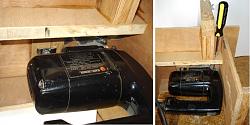
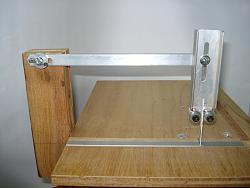
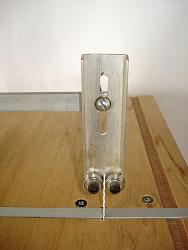
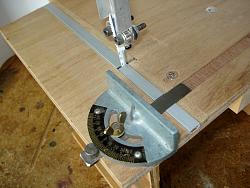
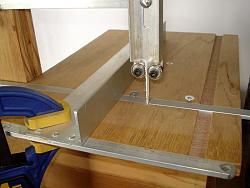
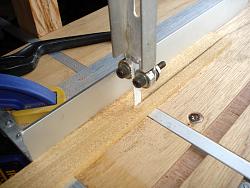
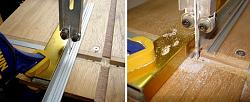
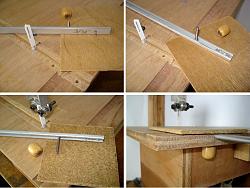
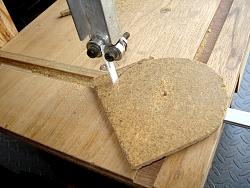


 Reply With Quote
Reply With Quote



Bookmarks